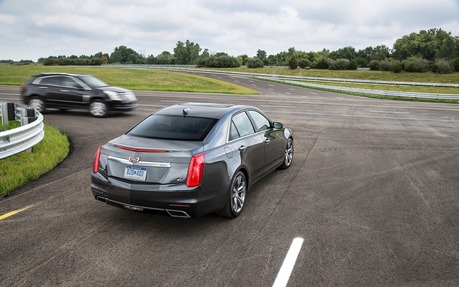Cadillac, Super Cruise and V2V
Sometimes the best information we get is during casual conversations over dinner. It was during one of these casual exchanges with Cadillac’s product director Hampden Tener that we learned more details about some new technologies to be introduced in future generations of the CTS and CT6 sedans.
Cadillac has already announced that vehicle-to-vehicle communication (V2V) will be available on the CTS, probably by the 2017 model year. V2V allows cars to communicate wirelessly, transmitting and receiving location and other traffic related data to help reduce collisions and improve safety. Initially this car-to-car communication will be limited to V2V-equipped CTS models, but Cadillac plans to retrieve information through this initial experiment, and possibly expand the technology into other models.
Super Cruise is another technology Cadillac is working with, which allows autonomous driving. The technology will allow the car to stay within its lane as well as brake and accelerate on the highway while keeping safe distances from the surrounding traffic, all without anyone touching the controls.
According to Cadillac, “The system is designed to increase the comfort of an attentive driver on freeways, both in bumper-to-bumper traffic and on long trips.” What this means is that Super Cruise isn’t designed to allow you to take a nap behind the wheel, but rather to alleviate you of some of the more tedious tasks, like constantly hitting the brake and gas pedal in traffic.
Tener confirmed that the first time the public will have access to this system will be in the Cadillac CT6, not when it becomes available next fall, but probably within two years.
You can be certain, however, that there is probably a fleet of preproduction CTS and CT6 models out there right now driving themselves and communicating with each other during testing.
